|
|
Expedition
Expedition | People
|
Log - August-6-2003
by Robert McCarthy
Previous | Next
Ride of a lifetime
Robert McCarthy |
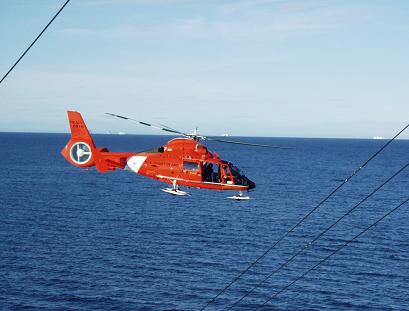 |
This heading could pertain to this entire research cruise; the scenery and breaking through ice on the Healy is amazing. But here, I’m talking about the “helo” ride! The helo is short for helicopter. The Healy is equipped with 2 of them, and they proved to be invaluable. They flew into Pond Inlet to pick up some cables for the ADCP, and without them, this cruise (for the most part) would have been a failure. There is other extremely good and important research taking place on this cruise, but $1.3 million dollars was spent on getting precise and accurate data of the flow through Nares Straight with the bottom ADCP moorings. Without those cables, they wouldn’t have been deployed. All I can say is, "Thanks to the helo operation crew"! |
| But that’s not all they do. They routinely fly north to scout out the ice cover, so the ship can navigate around some pack ice if permitted. Their most dangerous and important duty is sea-rescue. Each helicopter is equipped with a winch to save a person in the water. But today and on August 3rd, they flew to scout out possible locations to send the diving team looking for clams. Today Gerhard Behrens flew, and on August 3rd, I had my first helicopter flight. Not just any helicopter flight mind you, but one off the back of a moving ship in the Kennedy Channel north of 80 degrees latitude. That’s a "ride of a lifetime"! |
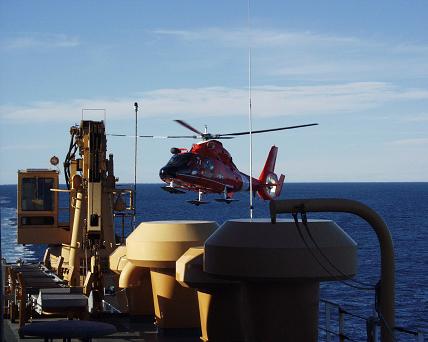 |
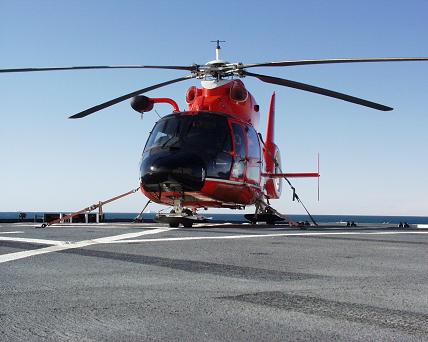 |
So how does a helicopter fly? Bernoulli has the answer. The helo has 4 rotating blades, each shaped like an airfoil with a length of about 20 feet. |
 |
| These rotate at 350 revolutions per minute (rpm’s). So how fast is the linear velocity at the tips of these blades? Take the radius of the circular motion and multiply it with the rotational velocity in radians per second. This gives me about 220 m/s, or roughly 500 mph. These blades rotate counterclockwise, and without lift correction would be tilted slightly from lower left to upper right if viewed from behind. This is because the blade on the right (as viewed from above) is moving relative to the air faster than the blade on the left. Bernoulli found that the faster moving fluid has a lesser pressure. So the right blade would be lifted up more than the left blade if it weren’t for the slightly different pitch of the blades as they rotate. See schematic for why the blades want to tilt. |
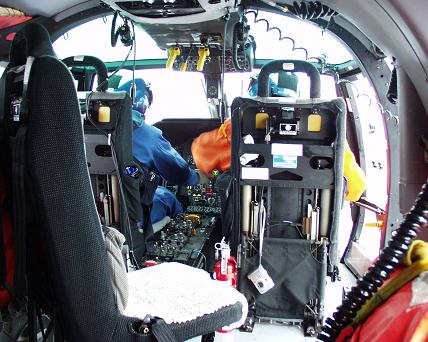 |
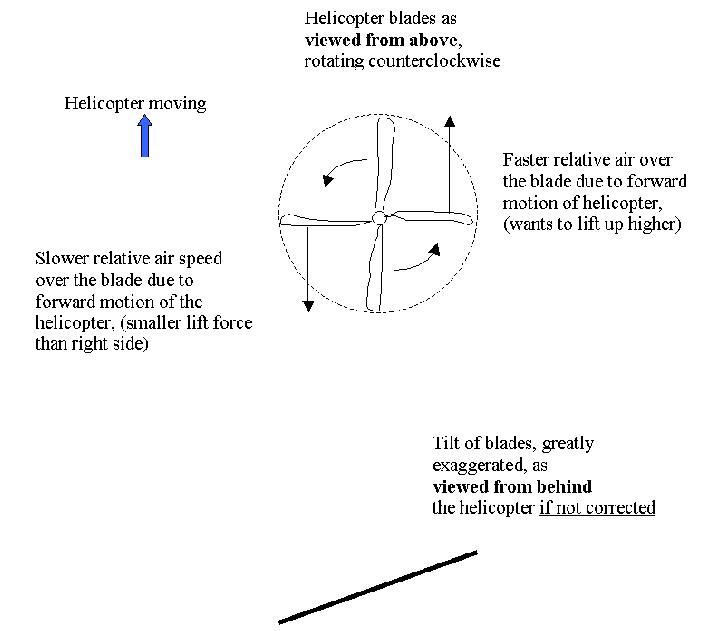 |
| Also, the maximum lift is positioned closer to the end that’s rotating the fastest, and tapers off to hardly any lift near the central rotating shaft. The rear blades, rotating vertically, help stabilize the helicopter, and counteract the rotational torque of the top blades. |
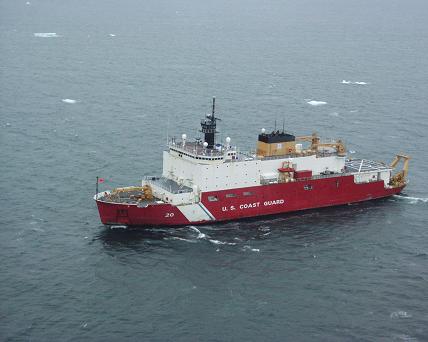 |
The maximum weight of the helicopter is 9200 lbs., which includes maximum fuel capacity of 1800 lbs. They burn about 600 lbs of fuel per hour, and can travel a maximum horizontal distance of 120 km one way. The cruising speed is about 165 knots, roughly 190 mph. It was quite a ride, one I’ll never forget. Thanks to the pilots, Lt. Damon Williams and Lt. Gary Naus for my safe and smooth flight, and everybody else who sees to it that those flights go off without a hitch. Thanks, “Helo-ops”! |
|
